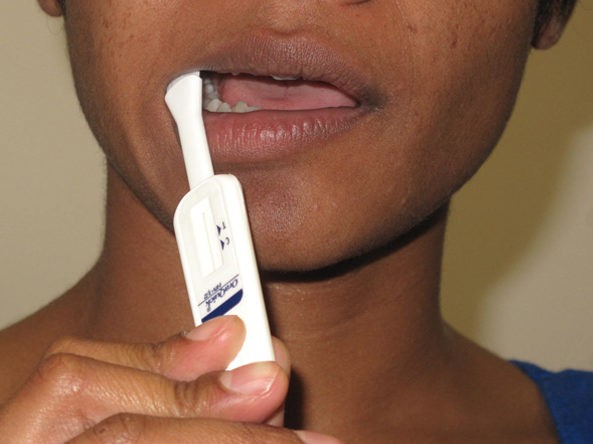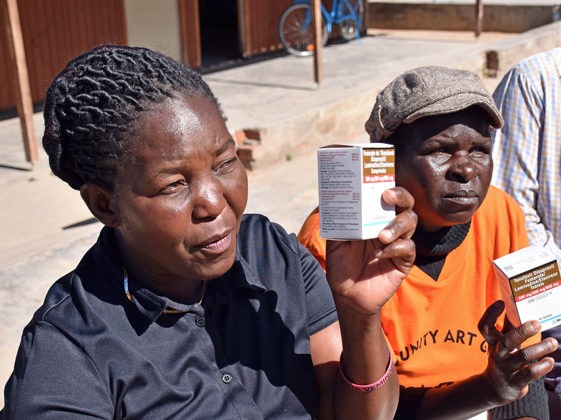Article and Study Summary
Impact of HIV self-test distribution to male partners of ANC clients: Results of a randomized controlled trial in Kenya.
Published in:
J Acquir Immune Defic Syndr. 2018;79(4):467-473.
doi: 10.1097/QAI.0000000000001838
Authors:
Gichangi A, Wambua J, Mutwiwa S, et al.
Summary:
This article reports on the results of a three-arm randomized controlled trial that evaluated the effect of providing HIV self-test kits to pregnant women attending antenatal care (ANC) on couples testing in Kenya. Women who were attending their first ANC visit were randomized to either receive the standard Kenyan Ministry of Health card inviting their male partner to the facility for a health discussion, an improved invitation card with HIV-specific information, or the improved invitation card plus two oral HIV self-test kits. Women and their male partners were surveyed three months later, and the primary outcome of interest was HIV couples testing, as reported by female participants. Significantly more women reported testing together with their partner in the group that was given the HIV self-test kits, with most of the men in this group testing at home. Most participants who used the self-test kit reported it was easy to use and interpret the results. These findings suggest that distribution of HIV self-test kits through ANC services could be an important strategy to increase HIV couples testing among pregnant women and their male partners.
Discussion Questions:
- How could the results presented in this article inform the use of HIV self-testing in the programs that you work with?
- What programmatic challenges do you foresee in implementing a similar intervention described in this study? Do you have any experiences to share?
Please share your thoughts and experiences with us in the comments section below.
Full Synopsis:
PDF version available in English, French, and Portuguese.
Study Summary
This is a three-arm randomized controlled trial that evaluated the impact of distributing HIV self-test kits to pregnant women attending antenatal care (ANC) on HIV couples testing in Kenya.
Study Setting
- Fourteen health facilities with high-volume ANC attendance in eastern and central Kenya.
Methods
- Pregnant women aged 18 years or older attending their first ANC visit were recruited to participate in the study.
- Additional inclusion criteria were having had at least weekly contact with their male partner, a male partner who was HIV negative or of unknown status, and a male partner who had not tested for HIV in the preceding three months.
- Women were excluded if they were concerned about the risk of violence from their male partner if they hinted at the prospect of HIV testing.
- Women were informed that their male partners would be contacted to discuss HIV testing.
- Female participants were individually randomized into one of three study arms:
- Arm 1: Standard of care, in which participants were given the standard Kenyan Ministry of Health card, inviting the male partner to come to the clinic for a discussion on the health of their family.
- Arm 2: Improved invitation card, in which participants were given a card that described the benefits of HIV testing for the family and the man’s own health and provided information on the possibility of serodiscordance.
- Arm 3: Oral HIV self-test kit and improved invitation card, in which participants were given the same card as in arm 2 and two HIV self-test kits with pictorial instructions on how to use the kit, and information, education, and communication materials on post-test counseling and HIV. Participants were assisted with negotiation skills to introduce HIV self-testing to their partners and were instructed to inform them to seek confirmatory testing for a positive result.
- Upon enrollment, female participants completed an interviewer-administered questionnaire that ascertained sociodemographic and behavioral information.
- Three months after enrollment, female participants completed a follow-up questionnaire to ascertain whether the male partner and woman underwent HIV couples testing.
- Consenting male partners completed an interviewer-administered structured questionnaire that ascertained sociodemographic characteristics and HIV testing behavior.
- The primary outcome was HIV couples testing, as reported by female participants.
- The secondary outcomes were the man’s self-report of HIV couples testing, and concordance in reporting within the couple.
- Multivariable logistic regression was used in analyses to adjust for sociodemographic factors and facility clustering.
Study Population and Follow-up
- During the study period 3,706 pregnant women were screened for eligibility, of which 2,296 (62%) either refused or did not meet eligibility criteria and 1,410 (38%) were randomized, with 471 women in arm 1, 467 in arm 2, and 472 in arm 3.
- Fifty-one women were excluded due to fear of sex-based violence.
- After three months, 86% (1,217/1,410) of women completed a follow-up interview, with slightly more women (89%) reached in arm 3 compared to arm 1 (87%) and arm 2 (83%).
- Eighty percent (1,133/1,410) of male partners completed a study interview, with more men reached in arm 3 (n = 389) compared to arm 2 (n = 362) and arm 1 (n = 375), for a total of 1,107 couples.
- Women were mostly aged 25–34 years (50%) and married (87%), with high levels of unemployment (51%) and low levels of education (56% with primary education or less).
- Most men were aged 25–34 (65%) and had secondary level education (60%).
Primary Outcome
- In arm 3, 79% of women reported testing together with their partner in the three months after the ANC visit, compared to 35% in arm 2 and 27% in arm 1.
- On multivariate analysis, the odds of couples testing was significantly higher for both arm 3 (adjusted odds ratio [aOR] 11.5, 95% confidence interval [CI] 8.0–16.5) and arm 2 (aOR 1.48, 95% CI 1.07–2.05), when compared to arm 1.
Secondary Outcomes
- In study arm 3, 82% of the men reported HIV testing as part of a couple compared to 28% in arm 1 and 37% in arm 2.
- Agreement between male partner self-report of HIV couples testing and women’s report of HIV couples testing was strong (Cohen’s kappa 0.91 in arm 1, 0.82 in arm 2, 0.85 in arm 3; p<0.001 in each arm).
Other Descriptive Results
- In each of the three arms, over 95% of women reported discussing HIV testing with their partners.
- Among women who reported their partners tested for HIV, 95% of women in study arm 3 reported their partners tested at home, while nearly all (>97%) women in the other arms reported their partners tested in a clinic or at the Voluntary Counseling and Testing center.
- Among those who used the self-test kits in study arm 3, the majority reported that it was very easy to understand the instructions (84% of women, 81% of men), obtain the sample for the test (84% of women, 80% of men), and read the results (92% of women, 90% of men).
- In study arm 3, 28% of men who reported self-testing also reported going to the health facility for confirmation of the test results, regardless of their HIV status.
Critical Analysis
This three-arm randomized controlled trial found that providing HIV self-test kits to pregnant women attending ANC services significantly increased rates of HIV couples testing. The majority of those who performed self-testing did so at home and found the self-test kits easy to use and interpret.
The following points should be considered when interpreting the study findings:
- All outcomes were self-reported by participants and therefore vulnerable to self-report bias, however there was good agreement between partner responses.
- All interventions were provided by a study nurse, not health facility staff. Therefore, it is unclear how feasible it would be to incorporate this intervention into routine ANC clinical services, especially at high-volume facilities.
- The majority of women screened were not enrolled, either because they were ineligible or refused. Women were excluded if their partner was away or if they expressed concern for physical violence, and women were made aware that their partners would be contacted to discuss HIV testing if they participated in the study. This could have contributed to selection bias, which may limit generalizability.
- Women were required to have at least weekly contact with their male partner, and the HIV status of the women was not a factor in this study. This limits generalizability of these findings to index partner testing more broadly, which may include more casual relationships and potentially different interpersonal dynamics if the index is known to be HIV-positive.
- The results presented do not include information about HIV testing outcomes, therefore it is unclear how many men underwent confirmatory testing after a positive self-test result.
- The primary outcome of interest was couples testing, therefore any additional testing of male partners outside of this intervention may not have been fully captured.
Implications
This three-arm randomized controlled trial in 14 health facilities in Kenya demonstrated that providing HIV self-test kits to pregnant women attending ANC services could significantly increase HIV couples testing. As countries work to develop HIV self-testing strategies, this study provides evidence that delivery of self-test kits through the ANC platform is feasible and that partner distribution can be an effective way to improve testing uptake among men. While these findings are promising, more evidence is required to know if these results are generalizable to settings other than ANC and to relationships outside of the context of pregnancy.
This article synopsis was written by Cassia Wells. Share your thoughts on this article or suggest an article for Journal Club by emailing her at caw2208@columbia.edu
Articles of Note
- Simple Screening Tool to Help Identify High-Risk Children for Targeted HIV Testing in Malawian Inpatient Wards
- Impact of a Comprehensive Adolescent-Focused Case Finding Intervention on Uptake of HIV Testing and Linkage to Care Among Adolescents in Western Kenya
- Evaluation of Xpert MTB/RIF assay for detection of Mycobacterium tuberculosis in stool samples of adults with pulmonary tuberculosis









